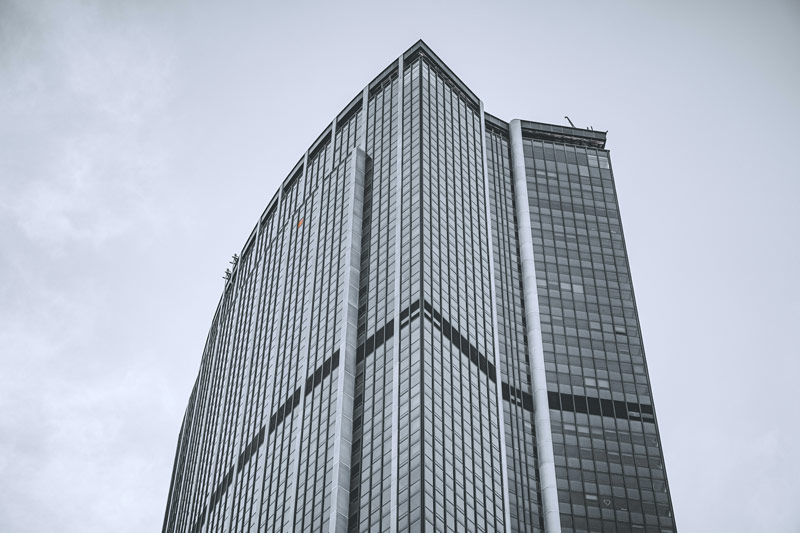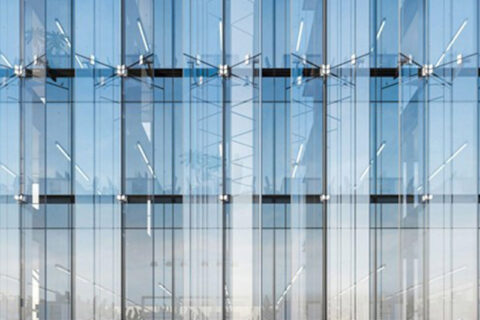A Complete Guide to Curtain Wall Installation for Commercial High-Rise Buildings

Take a look at any modern city skyline, and you’ll notice a common theme, which is sleek towers wrapped in glass and aluminum. These high-rises aren’t just built to impress; there’s some serious engineering behind those shiny exteriors. One of the key systems making it all possible is the curtain wall.
Unlike traditional walls, curtain walls don’t carry any weight from the building itself. Instead, they act like a shield that keeps out wind, rain, and temperature swings while giving the building its clean and contemporary look.
Therefore, knowing how curtain walls are installed isn’t just useful for architects or engineers; it’s essential for anyone involved in high-rise construction because the right approach ensures not only better performance and long-term durability but, most importantly, safety.
What Exactly is a Curtain Wall?
Before we talk about installation, let’s clarify what a curtain wall is. Simply put, it’s a thin, lightweight outer covering attached to the building’s structure. This covering is typically made of glass, metal, or a combination. While it doesn’t carry any structural load, it shields the building from wind, rain, and temperature swings.
Curtain walls fall into two main categories: stick systems and unitized systems. Stick systems are assembled piece-by-piece on-site, making them more flexible but labor-intensive. In contrast, unitized curtain wall systems arrive in pre-assembled panels, which are ideal for large-scale high-rises due to their speed and consistency.
The Unitized Curtain Wall Installation Process
In commercial high-rise projects where every day of construction counts, unitized systems are the preferred method. The unitized curtain wall installation process begins with careful factory assembly, followed by transport and crane-lifted installation at the job site. This approach minimizes on-site labor and reduces exposure to weather-related delays, which are the key advantages in high-rise construction.
What’s next? Panels are installed quickly, often floor by floor, allowing interior work to progress simultaneously. Well, it’s not just about speed. Factory-controlled conditions ensure high precision, better sealing, and reduced defects. These benefits altogether make the system more energy-efficient and longer-lasting.
Considerations Before You Install
Before any panels go up, design plays a massive role. Curtain walls must be engineered to handle wind loads, thermal expansion, seismic movement, and even sound insulation. Moreover, in commercial skyscrapers, glass selection also impacts building performance, like affecting daylight penetration, heat gain, and even HVAC costs.
This is why curtain wall system design considerations for commercial skyscrapers are never one-size-fits-all. You’ll need to factor in local climate, building orientation, and code compliance. For instance, in high-wind zones, anchorage systems must be engineered to resist uplift. However, in colder climates, thermal breaks and insulation become critical.
Therefore, making the right design choices upfront avoids costly modifications later and guarantees smoother installation.
Best Practices for Curtain Wall Installation in High-Rise Buildings
Even the most advanced curtain wall system can underperform without proper installation. That’s why best practices for curtain wall installation in high-rise buildings emphasize coordination, pre-installation checks, and mock-ups. Mock-ups help validate system performance. These include checking for water resistance, air leakage, and structural strength.
Other best practices include:
- Verifying alignment and anchoring at every level
- Maintaining clean and sealed joints for weatherproofing
- Regularly inspecting sealants and gaskets during installation
Wrap Up
Installing curtain walls in high-rise buildings isn’t just about assembling parts; it’s about engineering performance, speed, and aesthetics into one seamless process. From unitized curtain wall installation processes to tailored design considerations for commercial skyscrapers, it’s a job for experienced hands.
If you need expert guidance or hands-on service for your next curtain wall project, reach out to us. At Glaziers Consulting we bring precision, speed, and reliability to every curtain wall installation. Whether you’re building up or building better, let’s talk. 609-710-3719.

